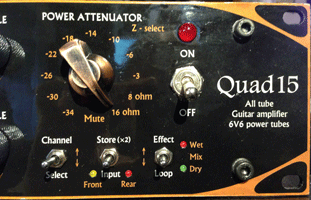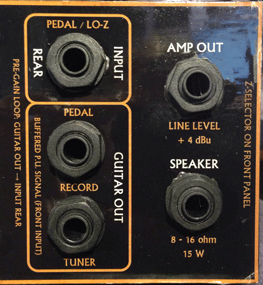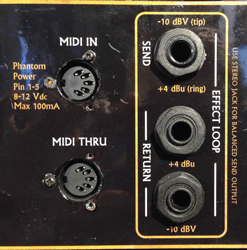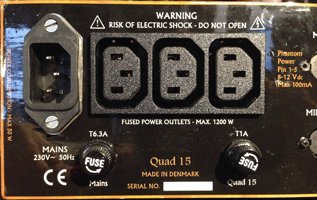
Development of Quad 15 guitar tube amplifier for production
For more than 10 years, I’ve been designing amplifiers for guitars in many variations both transistor- and tube based. The quest for building the best sounding amp with new sounds and features has resulted in many new ideas, which have been built, tested and approved or discarded depending on the results. The purpose of this page is to show my ideas for two reasons:
1. To show future customers and partners my amplifier designs.
2. To prevent other companies from claiming rights to inventions/designs similar to mine with the purpose to block production of my amplifiers.
During my active years as a musician, I’ve seen how many guitarists have been struggling with their gear to get a “simple” good sounding setup with only two or three foot-switchable sounds. People get lost in advanced programmable settings, impedance selectors, bad power supply connecters and too many cables to hook up just before the sound check. For many guitarists, the simple 2 channel classic tube head always wins, cause you have everything in one box… - except effects for lead sounds and the sound of the SPEAKER! (The most underestimated component of an electric guitar sound).
My goal is to design the ultimate guitar rig based on uncompromised tube circuitry that incorporates everything a guitarist would need in his setup. Advanced setups should be possible with a simple user interface to avoid confusion and technical issues in a live situation. The first amplifier that has been designed is therefore a 4 channel all tube guitar amplifier with a broad variety of sound options from super clean, compressed clean, creamy overdrive to hi-gain for lead and metal guitars: The “Quad 15”.
A small hand-made production line should be ready during 2016 and the target unit price would be around 20000 kr / 2800 $
Quad 15 - Specifications
Four channel all tube guitar amplifier with 15W push-pull output stage based on 6V6 power tubes. The amp comes in a 19” rack unit to be combined with e.g. effect modules and external power amps to drive multiple speaker cabinets. The preamp is designed with four 12AX7 tubes and a 12AT7 tube for the effect loop. All pictures are from the first prototype
EQ - Rythm/Lead: Bass Resonance, Freq, Mid and Treble
No master volume !!
(The power attenuator is based on the obligatory output transformer, which is equipped with multiple secondary taps. The power is then distributed by a 2 by 12 position rotary switch between an internal speaker emulator load and the speaker to retain a desired amount of power tube overdrive at a desirable listening level.)

Use mono jack cable – works like any amp. (High impedance)
Use stereo jack cable – connect bridge pickup to the tip and neck pickup to the ring of the jack in your guitar. Programmable pickup select is possible! Select pickup by Input: Front/Rear

(Since a non-colored signal is preferred for recording, this output is driven by a low noise/distortion operational amplifier.)
Connect to speaker. Maximum power is 15W from the 6V6 power tubes. Select between 8 ohm and 16 ohm with the rotary “Power attenuator” on the front panel. (Z-select)
Connect the signal from the speaker to an external amp to drive more speaker cabinets. This way you can get as many watts as you wish, e.g. with separate volume controls.
(This output is directly connected to the speaker output via an attenuator to feed an external amp with the tube sound of the Quad 15 including the dynamic response and overdrive of the power amp. E.g. use a low distortion transistor power amp to drive more speakers.)
Send:
Post preamp output.
Use a mono cable to connect to effect pedals or other low signal devices. (-10 dBV)
Use a stereo cable to connect to rack effects or other line level devices. (+4 dBu).

Separate return jacks are available to receive either low or high level signals from e.g. effect units.
Midi programmable:
Channel select (Clean/Overdrive/Rhythm/Lead)
Input select (Front/rear input or pickup select)
Effect loop (Wet/Mix/Dry)
Phantom power to Midi-board to avoid separate power supply on the front of the stage.
